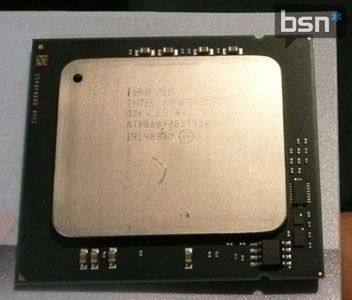From our front-page news:
It looks as though Intel's next dual-socket platform might not be a straight-forward dual desktop CPU setup like the original Skulltrail. Bright Side of News is reporting that "Skulltrail 2" will instead be comprised of Octal-Core (8) processors based on Nehalem-EX. That's right... 16 cores, and 32 threads.
When I questioned Intel regarding the validity of this claim, I received back an answer that neither denied or confirmed it, so I'd be willing to believe that Intel is indeed considering moving to a 16 Core Skulltrail 2 rather than an 8 Core version. For what reason is unknown, but chances are it's simply because a) it's not going to be in high-demand, and b) that is a lot of power to brag about. But, it's important to note that even if they are considering that particular move, it doesn't mean it will happen.
The question of course arises... "who could touch all that power?" and in truth, I don't think the answer is a simple one. After all, even with our original Skulltrail article, we had a difficult time finding ways to properly push all 8 Cores / 8 Threads. Just imagine how challenging 32 threads would be! If the original Skulltrail was the "ultimate" multi-tasker's PC, I think we're going to need to invent a new word to describe Skulltrail 2.
Here's Intel's official stance: "We have not announced any plans to bring a new ‘Skulltrail’ board to market. We are always researching and looking at new technologies for various segments, so we are not saying we would never come out with this board. But, at this time we have no public plans to do so."

Many OS and apps code paths would now nicely fit in that huge cache, but high speed memory would still be useful for streaming and HPC apps. Every Nehalem-EX Beckton processor has a quad-memory controller, e.g. 256-bit interface. With DDR3-1333, you will get 85.3 GB/s. But with DDR3-1600 you would get 102.4GB/s e.g. CPUs would have more than 100GB/s of system bandwidth for the first time in history!
Source: Bright Side of News
When I questioned Intel regarding the validity of this claim, I received back an answer that neither denied or confirmed it, so I'd be willing to believe that Intel is indeed considering moving to a 16 Core Skulltrail 2 rather than an 8 Core version. For what reason is unknown, but chances are it's simply because a) it's not going to be in high-demand, and b) that is a lot of power to brag about. But, it's important to note that even if they are considering that particular move, it doesn't mean it will happen.
The question of course arises... "who could touch all that power?" and in truth, I don't think the answer is a simple one. After all, even with our original Skulltrail article, we had a difficult time finding ways to properly push all 8 Cores / 8 Threads. Just imagine how challenging 32 threads would be! If the original Skulltrail was the "ultimate" multi-tasker's PC, I think we're going to need to invent a new word to describe Skulltrail 2.
Here's Intel's official stance: "We have not announced any plans to bring a new ‘Skulltrail’ board to market. We are always researching and looking at new technologies for various segments, so we are not saying we would never come out with this board. But, at this time we have no public plans to do so."

Many OS and apps code paths would now nicely fit in that huge cache, but high speed memory would still be useful for streaming and HPC apps. Every Nehalem-EX Beckton processor has a quad-memory controller, e.g. 256-bit interface. With DDR3-1333, you will get 85.3 GB/s. But with DDR3-1600 you would get 102.4GB/s e.g. CPUs would have more than 100GB/s of system bandwidth for the first time in history!
Source: Bright Side of News
